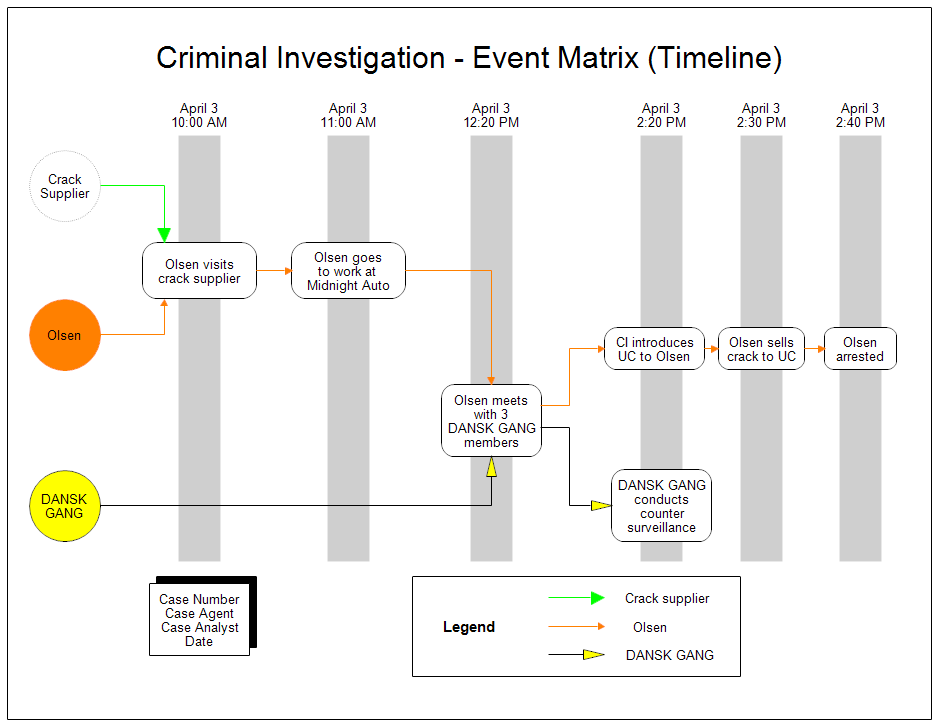In this criminal investigation timeline, the people involved are shown on
the left in circles. The events are in rectangles set on gray bars. At the top
of each gray bar is the date and time the event took place. By following the
lines from the circles to the events, you can see which people took part in
which event. The timeline helps to explain a criminal operation.
The timeline shown above was generated in RFFlow from data. The data was in an
Excel spreadsheet and saved as a .csv file. The .csv file was then opened in
RFFlow to generate the chart.
The above timeline is a criminal analysis timeline. RFFlow can also draw other
kinds of timelines with the same data.

Professional Flowcharting Software
|
|
|
|
|
|
|
|
